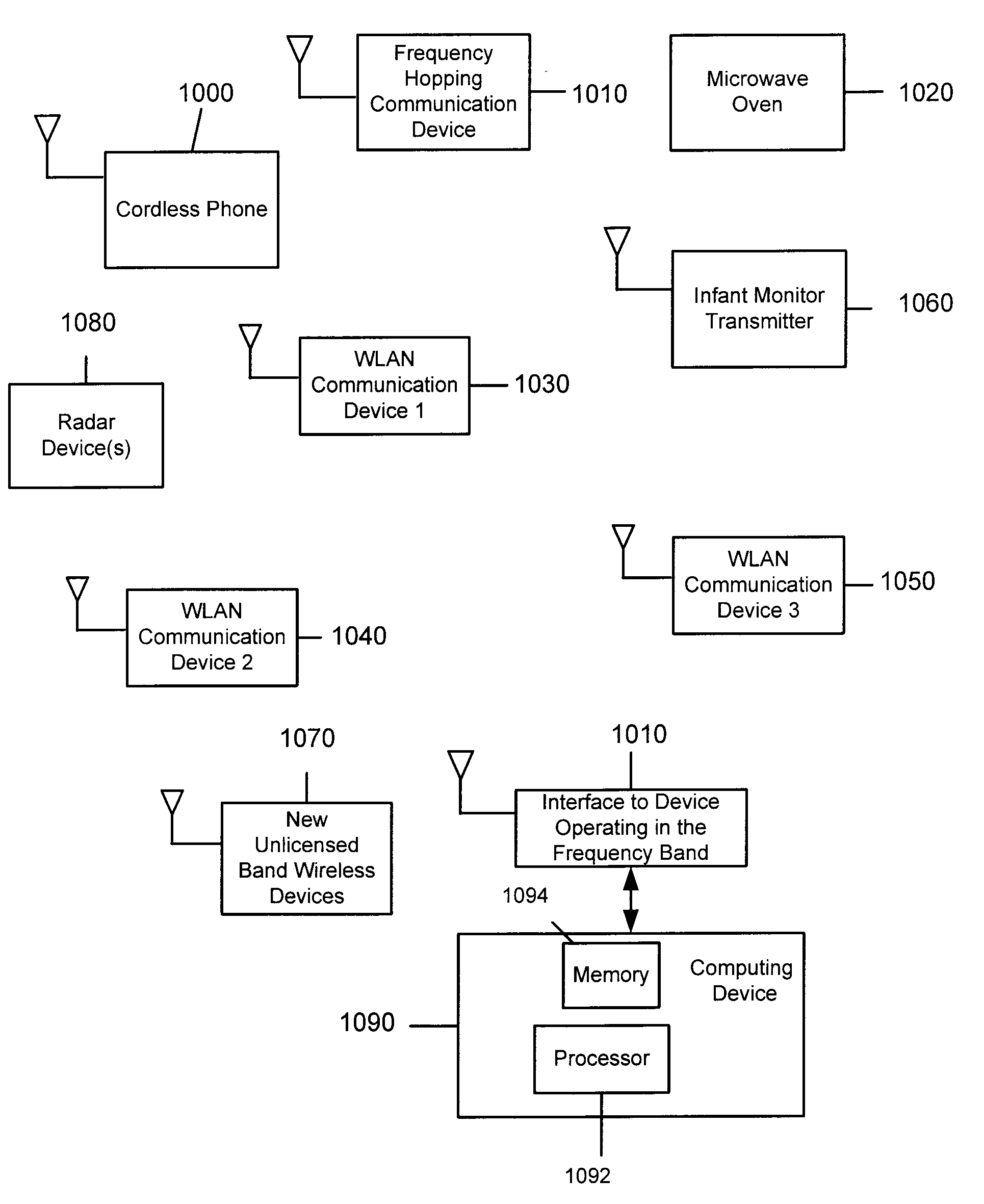System and Method for Spectrum Management of a Shared Frequency Band
a technology of shared frequency band and spectrum management, applied in the field of system and method for spectrum management of shared frequency band, can solve the problems of difficult use of current unlicensed band products, complex and costly installation, and difficulty in using unlicensed bands, and achieve the effect of measuring the total spectrum activity
- Summary
- Abstract
- Description
- Claims
- Application Information
AI Technical Summary
Benefits of technology
Problems solved by technology
Method used
Image
Examples
Embodiment Construction
[0029] The system, methods, software and other technologies described herein are designed to cooperatively manage use of a frequency spectrum that has little or no use restrictions or requirements. However, many of the concepts described herein may apply to frequency spectrums that are not "unlicensed."
[0030] Referring first to FIG. 1, an environment is shown where there are multiple devices that at some point in their modes of operation, transmit signals within a common frequency band. When these devices are sufficiently close in proximity to each other, or transmit signals at sufficiently high power levels, there will inevitably be interference between signals of one or more devices. FIG. 1 shows a non-exhaustive exemplary selection of devices that may operate in an unlicensed frequency band, including cordless phones 1000, frequency hopping communication devices 1010, microwave ovens 1020, wireless local area network (WLAN) communication devices 1030, 1040 and 1050, infant monito...
PUM
 Login to View More
Login to View More Abstract
Description
Claims
Application Information
 Login to View More
Login to View More - R&D
- Intellectual Property
- Life Sciences
- Materials
- Tech Scout
- Unparalleled Data Quality
- Higher Quality Content
- 60% Fewer Hallucinations
Browse by: Latest US Patents, China's latest patents, Technical Efficacy Thesaurus, Application Domain, Technology Topic, Popular Technical Reports.
© 2025 PatSnap. All rights reserved.Legal|Privacy policy|Modern Slavery Act Transparency Statement|Sitemap|About US| Contact US: help@patsnap.com



